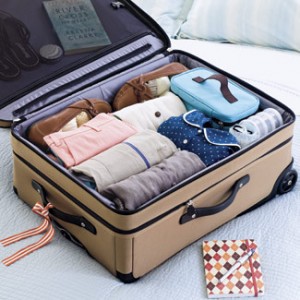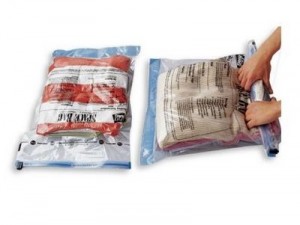“So please, oh PLEASE, we beg, we pray, Go throw your TV set away, And in its place you can install, A lovely bookshelf on the wall.”
— Roald Dahl, Charlie and the Chocolate Factory

If your child has enough books to operate her own children’s library, is it possible that she has too much of a good thing?
First of all, is storage space or clutter the primary concern? Have you weeded the toy population yet? (In my humble opinion, books trump toys!) If so, by all means limit the number of books to fit comfortably in the child’s room. Work with your child to set aside stacks of his favorite books and those that don’t appeal to him. Don’t state that any books will be discarded at first, as this may result in a number of unlikely additions to the favorites pile. Some “special” books may include favorite bedtime stories, gifts from family members, or the first book that your child read on her own.
If your little one is too young to help with this task, spend a week or two paying close attention to his current likes and dislikes. As you know best, some items are grabbed and handled more than others!
Once the selection is complete, set aside any discarded books that once had special meaning for you and your child. If space permits, he may value having these as an adult. You may also wish to store seasonal favorites or any books that you suspect your child has discarded because they are too advanced for her present reading level. These may also be stored and introduced at an appropriate time (more on that later!).
Whether your home can hold the entire Library of Congress collection or only a single shelf’s worth of books, now is a great time to consider the role that the books in your child’s room play in her literacy development. It’s amazing how significantly home-based reading habits and choices can affect your child’s reading confidence and proficiency!
Remain in active dialogue with your child’s teacher and other caregivers about her reading habits and development at school or daycare. We teachers are always happy to support at-home learning! Whether you hear that your child could use some support to reach grade level proficiency, is right on target, or is several steps ahead of his peers, you’ll be able to reinforce and challenge his learning at home.
Maintaining book balance:
Even timid readers typically feel very proud of their reading accomplishments. Be sure to keep a few books that your child has mastered recently and allow her the opportunity to “show off” her skills by reading aloud to you or a sibling. Likewise, particularly if your child is an emerging reader, keep those alphabet and phonics-based books handy. She may benefit from looking back at these for some time.
 Every child requires a bit of challenge for reading advancement. Your child’s book collection should include several books that are challenging for him to read alone, but that, with your help and practice, he will be able to master with effort. Parents can be particularly helpful during a child’s transition from picture to chapter books. It’s a good idea to have a few of these on hand and read them with your child in small doses, even if he resists reading them alone or isn’t yet able to do so.
Every child requires a bit of challenge for reading advancement. Your child’s book collection should include several books that are challenging for him to read alone, but that, with your help and practice, he will be able to master with effort. Parents can be particularly helpful during a child’s transition from picture to chapter books. It’s a good idea to have a few of these on hand and read them with your child in small doses, even if he resists reading them alone or isn’t yet able to do so.
Whether or not you have the space for serious stacks or a single shelf, remember that reducing the number of things your child owns is a great opportunity to teach lasting positive behaviors. Consider helping your child decide to donate some favorite but outgrown books to charity. Exchanging books at a used bookstore is a great way to teach the concept of “reusing” resources.
Finally, don’t forget your neighborhood library! You’ll be happy with the saved space and money. Your child will find an abundance of books free for the reading and will gain a sense of responsibility when she learns how to check out a book, enjoy it at home, and return it on time so others may enjoy it.
Back to the original question for a second, though—the teacher in me says there can never be “too many” books in a child’s life—it’s really just a matter of managing their presence appropriately.
–Erin L. Kelly, M.A., C.A.S., M.Ed.
Art Conservator / Educator / Outreach
Erin is an independent educator, art conservator, and visual artist who enjoys writing and promoting creative projects in her spare time and is happy to call Atlanta home. She enjoys teaching students of all ages and has worked in traditional classrooms, universities, museums, and remotely, as a distance learning coach. Along with visual art and art-integrated science, English, and math instruction, Erin offers curriculum design, content, and consulting services.


























